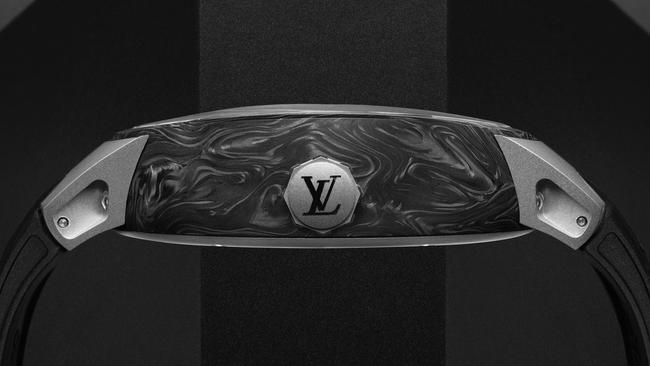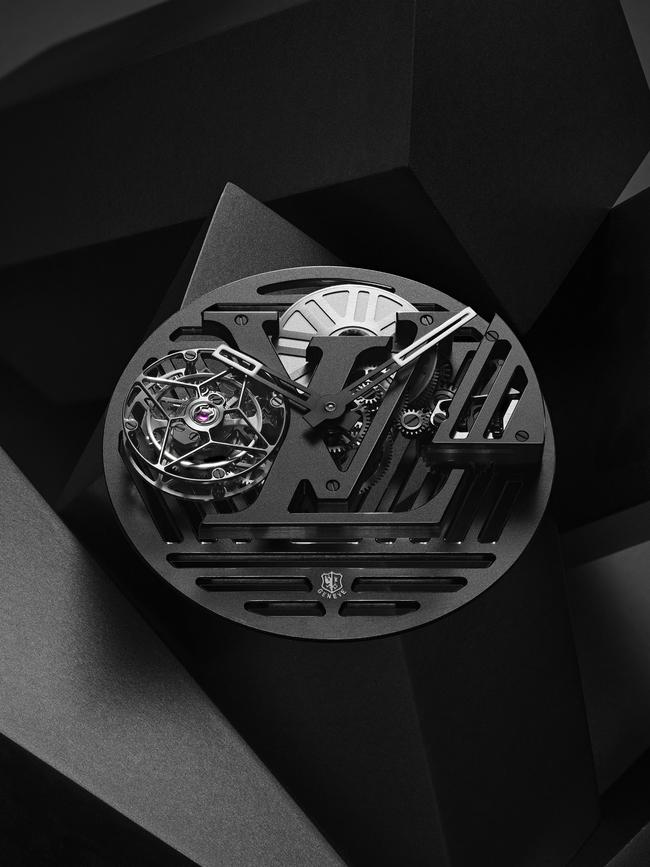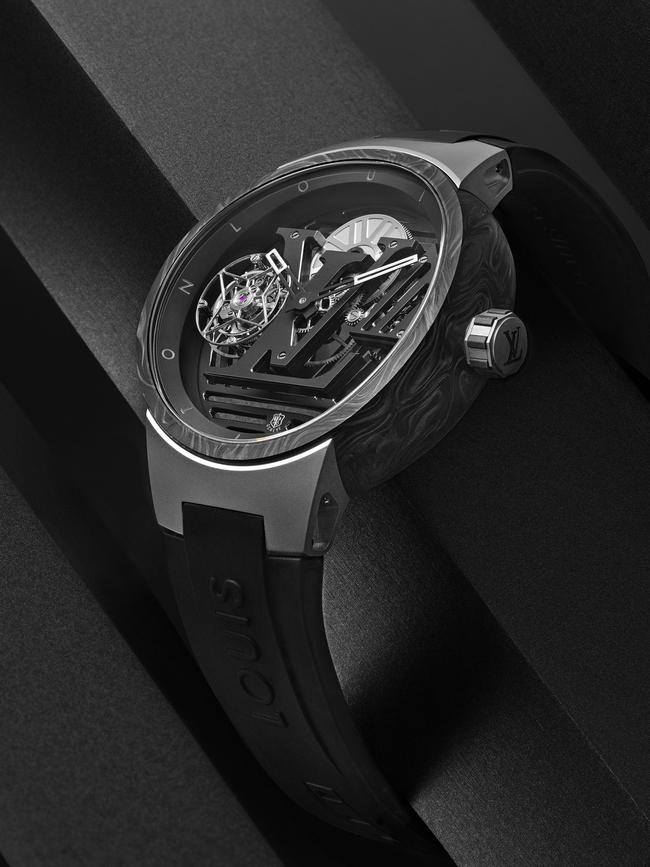Why wear a watch?
The newest iteration of Louis Vuitton’s renowned Tambour shows that in an age of atomic clocks and smartphones the art of fine watchmaking is about so much more than mere timekeeping.

While devices for telling the time date back to 1500 BC, it goes without saying that there have been significant improvements in horology over the centuries. Today the most advanced clocks, known as atomic clocks, are accurate to the point of one second every 10 million years. The most advanced mechanical wristwatches are accurate to within plus/minus two to three seconds in 24 hours. That’s pretty accurate, but what about the clock on your smartphone? Well, that’s synchronised according to an atomic clock, which means it couldn’t be more precise.
Which raises the question: why wear a mechanical watch on your wrist when the phone in your hand is more accurate?

“Today we have the technology of atomic clocks … but at the same time, we have fine watchmaking that will always be there,” says Michel Navas, Louis Vuitton’s master watchmaker. “It will be there on our wrists because the wristwatch is more than a timekeeper. It’s a travel companion, it reflects your personality and says a lot about you.” And as to whether watchmaking is a dying art, Navas says simply: “All our watchmaking schools are full of students.”
Navas joined Louis Vuitton in 2012 after stints with Patek Philippe, Audemars Piguet and Franck Muller. In 2004, along with Enrico Barbasini he established the watch manufacturer La Fabrique du Temps, which was acquired by Louis Vuitton in 2012 after the company developed Louis Vuitton’s revolutionary Spin Time watch. Previously Louis Vuitton had collaborated with other LVMH-owned watch houses such as TAG Heuer and Zenith on its watchmaking, which it started in 2002, but the acquisition of La Fabrique du Temps pushed it into another horological realm.

Louis Vuitton’s strategy in watchmaking has been to focus on its distinctive Tambour, or drum-shaped case, which has since become the basis for a steadily growing repertoire of in-house complications. This year the Tambour Curve was added, in a move Navas says is a milestone for the company. “Everything is new in this development,” he says. “It’s our third Geneva seal movement, with a flying tourbillon on the left side housed in a new case made with a very special carbon [carbostratum] and titanium.” The watch, he says, is comfortable on the wrist thanks to its unique shape and lightness of materials.
The case of the Tambour Curve has been reworked and elongated. The skeletonised flying tourbillon has been moved from its more traditional position at six o’clock to nine o’clock, to better accommodate the open-work plate and the bridge depicting the house’s LV logo. A flower, an element of the iconic Louis Vuitton monogram design, forms the cage of the tourbillon itself. The hand-wound movement has a power reserve of 80 hours.
“There are multiple ways to create a new Louis Vuitton watch, and inspiration comes from everywhere,” says Navas. “Our history, our DNA, new movement ideas or even other product categories. The one priority is to bring a Louis Vuitton twist to each watch. The maison has such a rich heritage and so many stories to tell, even if not directly linked to the watch world. That is what makes us different.”



